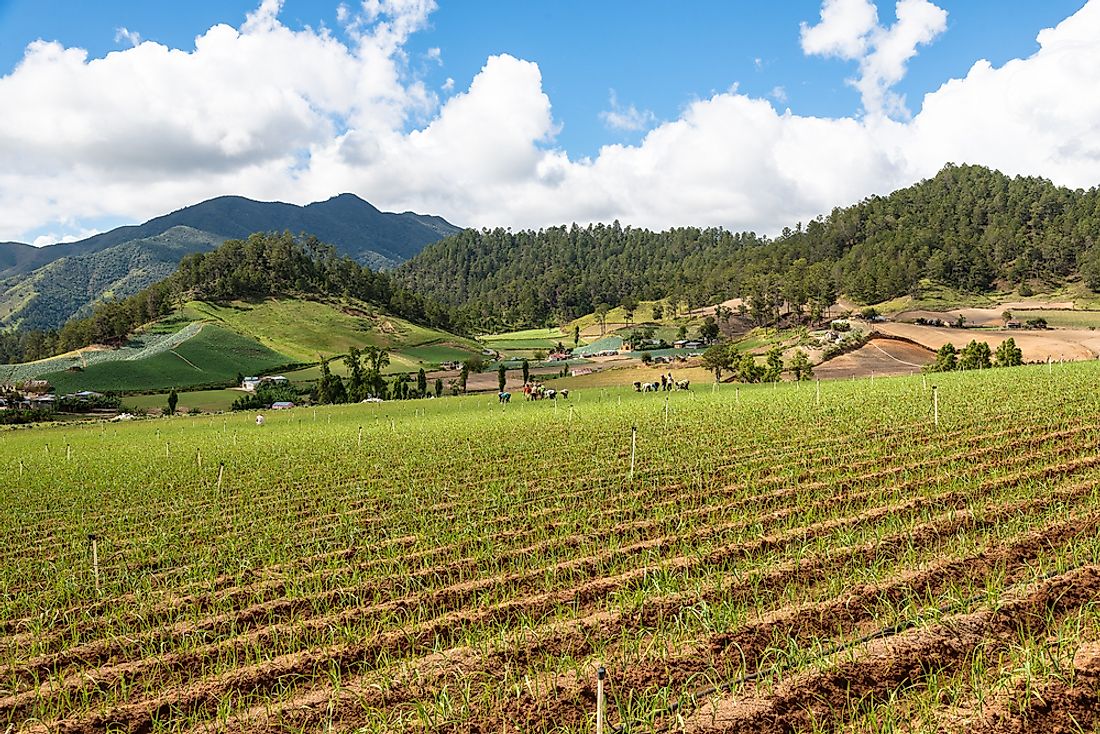What Are The Biggest Industries In The Dominican Republic?

The Dominican Republic is an island nation located on the island of Hispaniola. The country is categorized as a developing, upper-middle-income nation and its economy is highly dependent on tourism, agriculture, mining, and trade. Agriculture is the second most important industry particularly in export earnings just behind mining.
Agriculture
About 80% of the Dominican Republic land area is suitable for agriculture an almost 17% of the country's labor force engage in agriculture. Agriculture is a critical economic activity in the Dominican Republic and accounts for about 11% of the GDP as of 2001. Between 1968 and 1973, agricultural output expanded with an average of 7.1% every year but in subsequent years it was affected by drought and other disasters such as hurricanes. Besides, the falling prices of most agricultural products and the introduction of quarter allocation of sugar significantly affected the agricultural output in the country.
Mining
As from 2000 mining in the Dominican Republic accounted for approximately 2% of the GDP and it grew by almost 7.8%. Mineral mining in the country has stagnated from the time the country experienced a slump in the mid-1980s. The country's most important mineral is nickel which has experienced growth as a result of higher prices of the mineral. The mineral is mined at Bonao region, and in 2000 the production stood at 39,943 tons making the country the world's 10th biggest producer of the mineral; however, in 1997 production was at its highest of 49,152 tons. Other minerals produced in the country include silver and gold, although the production of the two minerals was suspended in 1999.
Tourism
Tourism in the Dominican Republic has become one of the leading earners of foreign exchange. The popularity of tourism in the country began in the mid-1980s, and it has become famous because of its location in the Caribbean, its beaches, the tropical climate, and the restoration of Spanish colonial architecture. There are several foreign investors in the country which have developed and expanded resorts and airports along the coastal regions. In the recent past tourism has overtaken sugar as the major source of the country’s revenues and by 1997 tourism was generating more than half of foreign earnings in the country.
Challenges
The Dominican Republic has experienced strong economic growth; having the second highest in Latin America. However the country has some challenges, and according to the World Bank, the country could easily achieve high-income status by 2030, but the country must address six major challenges. The principal challenges include improving the country's fiscal balance, building the country's human capital, promoting a better business environment, enhancing the management of the country's natural resources, improving resilience to climate-related risks and disasters, and increasing policy-making, transparency, and accountability.











